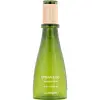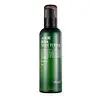What's inside
What's inside
 Key Ingredients
Key Ingredients

No key ingredients
 Benefits
Benefits

 Concerns
Concerns

 Ingredients Side-by-side
Ingredients Side-by-side

Phormium Tenax Extract
Skin ConditioningPEG/PPG-17/6 Copolymer
SolventButylene Glycol
HumectantGlycereth-26
HumectantPEG-32
HumectantHoney
HumectantCalendula Officinalis Flower
Skin ConditioningEchinacea Angustifolia Root Cell Culture Extract
Skin ConditioningPEG-240/Hdi Copolymer Bis-Decyltetradeceth-20 Ether
StabilisingHydrogenated Lecithin
EmulsifyingGlycerin
HumectantDimethicone
EmollientSucrose Distearate
EmollientBis-PEG-18 Methyl Ether Dimethyl Silane
EmollientPEG-60 Hydrogenated Castor Oil
EmulsifyingPEG-12 Glyceryl Laurate
EmulsifyingPEG-36 Castor Oil
EmulsifyingAcrylates/C10-30 Alkyl Acrylate Crosspolymer
Emulsion StabilisingPhenoxyethanol
PreservativePotassium Hydroxide
BufferingChlorphenesin
AntimicrobialDisodium EDTA
Parfum
MaskingPhormium Tenax Extract, PEG/PPG-17/6 Copolymer, Butylene Glycol, Glycereth-26, PEG-32, Honey, Calendula Officinalis Flower, Echinacea Angustifolia Root Cell Culture Extract, PEG-240/Hdi Copolymer Bis-Decyltetradeceth-20 Ether, Hydrogenated Lecithin, Glycerin, Dimethicone, Sucrose Distearate, Bis-PEG-18 Methyl Ether Dimethyl Silane, PEG-60 Hydrogenated Castor Oil, PEG-12 Glyceryl Laurate, PEG-36 Castor Oil, Acrylates/C10-30 Alkyl Acrylate Crosspolymer, Phenoxyethanol, Potassium Hydroxide, Chlorphenesin, Disodium EDTA, Parfum
Salicylic Acid 0.5%
MaskingAloe Barbadensis Leaf Water
MaskingSodium Hyaluronate
HumectantSnail Secretion Filtrate
Skin ConditioningGlycerin
HumectantPentylene Glycol
Skin ConditioningZanthoxylum Piperitum Fruit Extract
Skin ConditioningPulsatilla Koreana Extract
Skin ConditioningUsnea Barbata Extract
Polysorbate 20
EmulsifyingArginine
MaskingAlthaea Rosea Root Extract
HumectantAloe Barbadensis Leaf Extract
EmollientAloe Barbadensis Leaf Juice
Skin ConditioningBeta-Glucan
Skin ConditioningPolyglutamic Acid
Skin ConditioningAspalathus Linearis Extract
Skin ConditioningPortulaca Oleracea Extract
Skin ConditioningPsidium Guajava Fruit Extract
AstringentSalicylic Acid 0.5%, Aloe Barbadensis Leaf Water, Sodium Hyaluronate, Snail Secretion Filtrate, Glycerin, Pentylene Glycol, Zanthoxylum Piperitum Fruit Extract, Pulsatilla Koreana Extract, Usnea Barbata Extract, Polysorbate 20, Arginine, Althaea Rosea Root Extract, Aloe Barbadensis Leaf Extract, Aloe Barbadensis Leaf Juice, Beta-Glucan, Polyglutamic Acid, Aspalathus Linearis Extract, Portulaca Oleracea Extract, Psidium Guajava Fruit Extract
Alternatives
Ingredients Explained
These ingredients are found in both products.
Ingredients higher up in an ingredient list are typically present in a larger amount.
Glycerin is already naturally found in your skin. It helps moisturize and protect your skin.
A study from 2016 found glycerin to be more effective as a humectant than AHAs and hyaluronic acid.
As a humectant, it helps the skin stay hydrated by pulling moisture to your skin. The low molecular weight of glycerin allows it to pull moisture into the deeper layers of your skin.
Hydrated skin improves your skin barrier; Your skin barrier helps protect against irritants and bacteria.
Glycerin has also been found to have antimicrobial and antiviral properties. Due to these properties, glycerin is often used in wound and burn treatments.
In cosmetics, glycerin is usually derived from plants such as soybean or palm. However, it can also be sourced from animals, such as tallow or animal fat.
This ingredient is organic, colorless, odorless, and non-toxic.
Glycerin is the name for this ingredient in American English. British English uses Glycerol/Glycerine.
Learn more about Glycerin